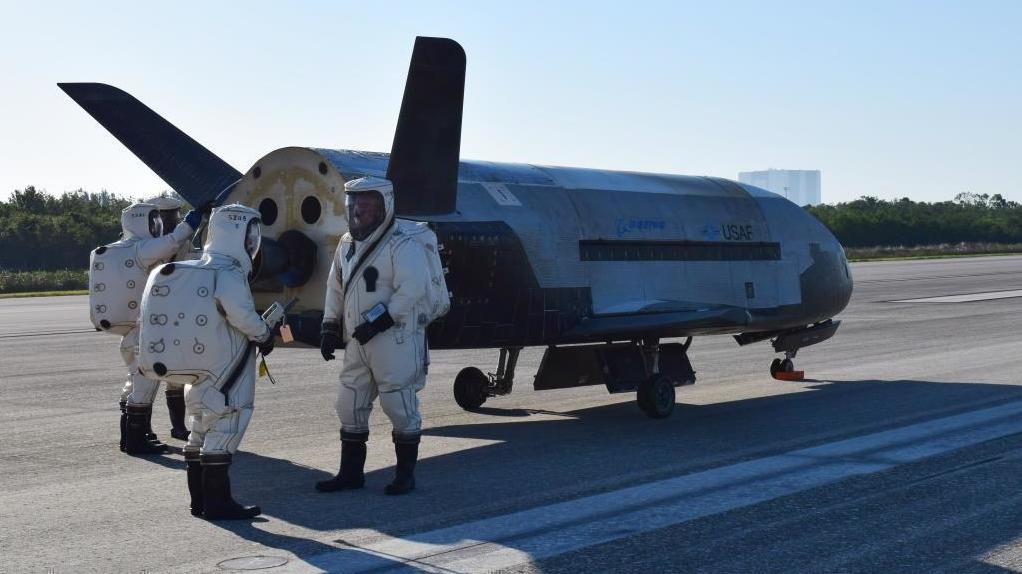
The United States Space Force, the first new military branch since 1947 and one of President Donald Trump’s signature achievements, has started formally recruiting personnel, even as lots of questions remain about its future.
One tricky thing: exactly what to call those who work for the Space Force has still not been decided. The Air Force refers to its members as ‘airmen’ while the Army, of course, has ‘soldiers' and the Navy has 'sailors.'
Officials have ruled out calling trainees ‘space cadets.’ Yet, the titles ‘spacemen’ and ‘space soldiers’ aren’t likely to stick. The term ‘space professionals’ seems to be a placeholder for now.
That’s the term Gen. John Raymond, the nation’s first Chief of Space Operations, used during a recent webinar hosted by the Colorado Springs-based Space Foundation. The video chat was held in lieu of the foundation’s annual Space Symposium, a multi-day event held at the Broadmoor Hotel. This year’s symposium has been postponed until the end of October due to the coronavirus pandemic.
While the name is still up in the air, Space Force is already busy trying to recruit those future warfighters. It recently launched a flashy new recruitment ad, which downplays the fact that the job is much more likely to involve computer monitors than space shuttles.
During the webinar, Raymond and Air Force Sec. Barbara Barrett described in detail what it will take to stand up the new service.
“Recruitment hasn’t been a problem” so far, Barrett said. “If people find out there’s a possibility of joining the Space Force, there seems to be an avalanche of applicants.”
The force is particularly looking for recruits with a degrees in the STEM fields and backgrounds in cyber-technology and intelligence.
At full strength, the Space Force is expected to have about 15-thousand personnel, making it by far the smallest military branch. Much of the hiring is expected to happen internally, largely out of the existing space professionals from entities like the Air Force Space Command.
Additionally, The U.S. Air Force Academy recently graduated cadets into the Space Force for the first time, standing up the branch’s first 86 2nd Lieutenants.
Since its creation last December, Space Force has already taken a role in some of the challenges facing the country. Raymond said the service has helped with the nation’s coronavirus response, including helping to optimize internet bandwidth for navy medical ships responding to hard hit coastal cities.
Coronavirus has put a damper on some of the force’s early operations though; commanders decided last month to delay the launch of a new satellite to help upgrade the global GPS system.
Raymond also mentioned the force has also been busy intercepting threats in space from adversaries like Russia and Iran.
“Just within the past few months we’ve seen Russia maneuver a satellite with characteristics of a weapon system in proximity to the USA,” he said.
The webinar also offered the chance for the speakers to formally unveil the Space Force’s new unmanned shuttle-like craft, the X-37B. Barrett said the ship has completed five missions and its next flight will be on May 16th.
Part of its mission is to perform experiments, including one for NASA that will examine the effects of ambient space radiation on plant seeds and another run by the Naval Research Laboratory on transforming solar power into radio frequency microwave energy and transmitting that energy to earth.









